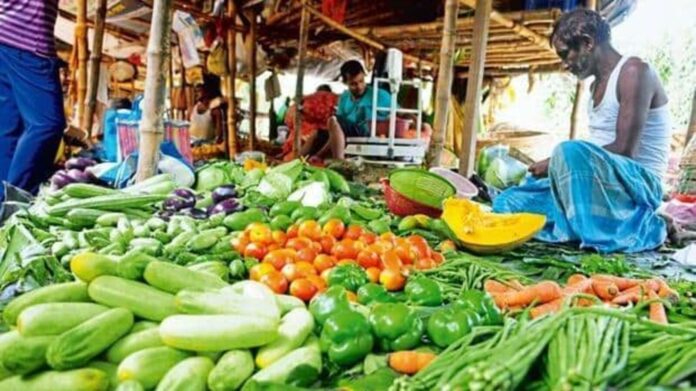Latest data released by the government confirms fears of India’s economy being in the grip of stubborn inflation, driven primarily by food. While overall inflation has stayed above 4% for more than two years, with the April 2024 reading at 4.83%, data also showed a widening gap between rural and urban inflation. Food inflation has been more than 8% since November, with cereal inflation witnessing a secular rise since January.
For April, cereal inflation was at 8.63%. Within cereals, rice inflation was high at 12.5%, with April marking the 19th consecutive month of above-10% inflation. Even wheat has shown a rising trend since January, with the April reading at 6%. Inflation in pulses has been above 10% since June. But the sharpest increase has been for vegetables, with inflation at more than 25% for the last six months.
The stubbornness of food inflation is surprising, since international prices began easing long back. According to the Food and Agriculture Organisation, cereal prices globally fell by 18% in April on an year-on-year basis. Even domestic supply seems to have increased, with claims by the ministry of agriculture of record production in almost every crop group.
Given that India’s economic recovery has been muted, a demand push is an unlikely driving force. If anything, core sector inflation (excluding food and fuel) at 3% confirms a demand deficit in the economy. Several other indicators, such as rural real wages and earnings data from Periodic Labour Force Surveys, suggest either declining or stagnant incomes in the country.
Estimates from the ministry of agriculture have largely been robust, although recent years have seen market associations, traders and farmers questioning them. Unseasonal rains, heat waves and other climatic factors have affected production, even though official data does not report any sharp decline. While production estimates and the fall in cereal availability may be a factor, it is not the only one.
The problem includes knee-jerk and ad-hoc decisions taken by the government on stock holding limits, apart from export and import rules covering quantitative restrictions on trade, the unintended effect of which has been artificial scarcity.
Despite the government’s intention of deregulating agricultural markets by bringing in three contentious farm laws, it has continued its policy of excessive regulation. While the trio of laws was withdrawn, the government’s reliance on arbitrary export curbs, price controls and domestic restrictions under the Essential Commodities Act (ECA) has raised uncertainty in farm markets, with price stability taking a resultant hit.
Exports of wheat were banned in May 2022, followed by a similar ban on broken rice in August, a regime expanded to include all non-basmati exports in July 2023. The ECA was invoked in June 2023 on wheat, limiting stocks held by traders, with further restrictions imposed in February 2024. The same month, the government asked traders to disclose their rice stocks every week. This was extended to pulses this April. Onions were subject to similar intervention aimed at price control.
Most of these calls seem to have been taken without adequate scrutiny of why these commodity prices were unstable and without any ground assessment of crop availability, demand and supply. These were also used as a scare tactic to push prices down.
These measures, however, have not led to any significant price reduction. On the contrary, they have stoked fear among traders. The very signal of a panic reaction from the Centre appears to have fuelled speculative price inclines in many commodities.
Excessive use of controls and other hard tactics to tame inflation is also detrimental to the interests of farmers, who end up punished for rising prices. Their lost opportunity to earn more from the market has acted as a crop disincentive. India’s decline in pulse production is an example of a supply response to the financial rewards of suppliers being reduced by erratic government policy.
Farmers were deprived of remunerative earnings not just because of export curbs, but also bulk imports, resulting in lower price realizations for them. While inflation control is necessary to protect India’s most vulnerable people, it must not be at the cost of farmers and their incentives to raise output. We need a price policy that protects the interests of farmers and consumers both, without using unnecessary strictures. Let’s adopt a comprehensive rule-based framework to stabilize agricultural prices. Let us replace ad-hoc tools with a rational approach.
#Fix #food #inflation #Quit #erratic #intervention #adopt #rulebook
